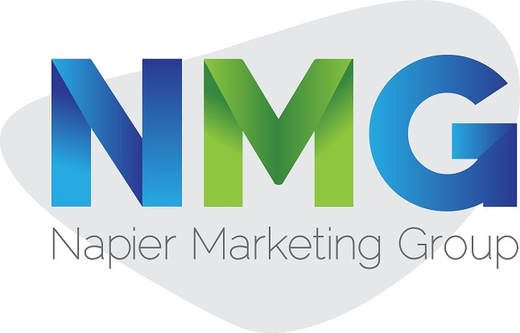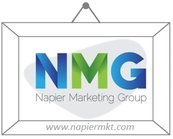How to Increase Brand Credibility Through User Feedback
All goods have a common difficulty. The issue of client inertia exists regardless of how long the products have been on the market or how effectively they have been constructed. Prospective clients are more comfortable sticking where they are. Some techniques persuade the customers to smoothly move through the stages of product adoption for product-led growth and thus boost the number of people using your product and drive business KPIs like sales, engagement, and reach.
Here are a few pointers we've picked up along the way to assist you in overcoming consumer inertia and helping people recognize the value of what you have to offer, regardless of whether you're getting ready for your first product launch or unveiling your fiftieth feature.
What exactly does "product adoption" mean?
Product adoption is the term used to describe how customers know about the product, understand its value, and begin using it. In most cases, the procedure is divided into four distinct stages: the awareness stage, the interest stage, the assessment stage, and the conversion stage.
People often consider measures such as the number of sign-ups or daily active users when they think about product adoption. Even if taken as a whole, these numbers don't tell you much about whether or not customers are integrating your product with their everyday lives, including it in their arsenal of professional tools, or embracing it as they cannot do without. You may argue that a product has achieved actual adoption when its value outweighs the effort and price required by the customer to make a switch.
It is essential to keep in mind that the people you need to persuade are not merely new users or early adopters. When you add new features and make enhancements to your product, you need to consider how you can ensure that current consumers continue to perceive value in using it even as you make these changes.
When marketers first started developing our product strategy at Intercom, they collaborated with The Re-Wired Group to ensure that the Jobs to be Done methodology was implemented correctly. Regarding the adoption of products, the group finds four factors at work. In most cases, two forces will work in your favor, while the other will be against you.
All four factors may be used to your advantage if you employ the appropriate marketing and product development strategies.
Steps to Increase Brand Credibility Through User Feedback
You may accomplish this goal – and, as a direct consequence, boost product adoption – by doing the following steps:
Let's take a more in-depth look at how businesses have successfully used these factors to enhance product adoption.
1. Make the push-away more aggressive.
Even if it isn't your regular practice to speak ill of others, pointing out the shortcomings in the current solution that your prospective customer is using and highlighting how your product makes up for any deficiencies can do a great deal to encourage people to switch keys or at the very least consider the possibility of trading solutions.
It is accomplished on the homepage of the knowledge management application known as Guru by comparing and contrasting the previous method of managing knowledge across teams and tools with the new and improved one (using their product). Their marketing strategies appeal to important feelings, such as relief and irritation, to generate a sense of urgency and a desire for change. It provides value in your consumers' product experience and persuades them to move from their current provider.
2. Make your product more appealing to customers.
Acquiring a new product, learning everything there is to know about it, and then instructing people on how to use it is, let's face it, a nuisance. With this second force, you may persuade customers to switch to your solution because of its allure rather than go elsewhere for the benefits you're offering. Testimonials from other customers, case studies, and product demonstrations are all excellent methods for assisting prospective clients in visualizing the positive effects that your product may have on their businesses.
In all seriousness, the list might go on forever. There is little room for the question raised by the website that the product is exceptional at what it does and generates actual results.
3. Reduce the anxiety and unpredictability associated with the transition
A prospect may be well aware of the shortcomings of their existing solution; the question is, however, whether or not they want to move. They can ask themselves, "What if it doesn't turn out the way we want it to?" Or, "What if we all switch, and everyone dislikes it?"
These problems should resolve, and it is your responsibility to do so. However, to alter a prospect's pre existing routines and loyalties, you will often need much more than a brilliant marketing strategy: First, you have to convince them to download a trial, and then, throughout the onboarding and training phase, you have to demonstrate the value that your product provides.
The "aha" moment:
The "aha" moment that our product researcher Lynsey Duncan describes above may or may not occur to a prospective buyer of your business depending on how successfully you expose them to your wares:
It might be difficult to characterize "Aha" moments, but most consumers can recognize them when they see them. For instance, there is a typical illustration of an "aha" moment that most people can relate to. Do you remember the first time you participated in a group message on WhatsApp and immediately discovered that this was almost difficult to perform with the default SMS software that came pre-installed on your phone? When you first heard about WhatsApp, it may have looked like a like-for-like replacement for SMS, but this discovery indicates that it is much more powerful and transformational than it initially seemed to be.
It is not enough for your onboarding to merely consist of a guided tour of the capabilities already available; it must result in an "aha" moment. It is the key to prospective customers seeing the value they can get from your product and having less anxiety about switching away from their existing solution. It is also the key to a customer recognizing the importance they can get out of your product.
4. Reduce the connection that they have to the current situation.
At least one of your potential customers has undoubtedly shared that they went with their existing solution either because it was suggested to them by a colleague or because "it appeared like everyone else was using it." It is a lot simpler to feel at ease with a product if the users are aware that there is a community that revolves around it or that there is someone you can turn to for rapid answers to any issues you may have about the product.
However, just because something is good for the majority doesn't mean it's suitable for everyone. Some businesses even focus their product marketing efforts on the notion that "we're not for everyone." In contrast, others zero in on the aspects that differentiate them from the most widely purchased things.
The five and six-stage models of product adoption:
In the past, models of product adoption often consisted of five or six phases. These models don't usually do an excellent job of capturing the lifespan of a contemporary user, especially in its later stages. On the other hand, the fact that they are no longer relevant does not exclude you from gaining knowledge from them.
The following are the conventional phases of product adoption:
Adoption is when customers make using your product their default option for whatever it is you provide. The only distinction between the five-stage model and the six-stage model is that the five-stage model omits an activation step.
Conclusion
What can you do to get the attention of your prospects and get them to prioritize your advantages above their sense of belonging to the group? It might be as easy as assuring them that you would add a feature they have been longing for (like more online privacy) or pointing out the many available support alternatives (so they don't have to contact a buddy for assistance).
Product adoption, also known as user growth, is the point at which customers begin using your company's website or product to achieve the objectives for which it was designed to assist. Adoption happens on a fundamental level by calculating the proportion of users that engage in that set of behaviors after becoming aware of the brand for the first time.
Here are a few pointers we've picked up along the way to assist you in overcoming consumer inertia and helping people recognize the value of what you have to offer, regardless of whether you're getting ready for your first product launch or unveiling your fiftieth feature.
What exactly does "product adoption" mean?
Product adoption is the term used to describe how customers know about the product, understand its value, and begin using it. In most cases, the procedure is divided into four distinct stages: the awareness stage, the interest stage, the assessment stage, and the conversion stage.
People often consider measures such as the number of sign-ups or daily active users when they think about product adoption. Even if taken as a whole, these numbers don't tell you much about whether or not customers are integrating your product with their everyday lives, including it in their arsenal of professional tools, or embracing it as they cannot do without. You may argue that a product has achieved actual adoption when its value outweighs the effort and price required by the customer to make a switch.
It is essential to keep in mind that the people you need to persuade are not merely new users or early adopters. When you add new features and make enhancements to your product, you need to consider how you can ensure that current consumers continue to perceive value in using it even as you make these changes.
When marketers first started developing our product strategy at Intercom, they collaborated with The Re-Wired Group to ensure that the Jobs to be Done methodology was implemented correctly. Regarding the adoption of products, the group finds four factors at work. In most cases, two forces will work in your favor, while the other will be against you.
All four factors may be used to your advantage if you employ the appropriate marketing and product development strategies.
Steps to Increase Brand Credibility Through User Feedback
You may accomplish this goal – and, as a direct consequence, boost product adoption – by doing the following steps:
- Increase the push-away by pointing out problems in the current product that the prospect is selling.
- Boost the allure of your product by demonstrating how well it answers the challenges your target audience faces.
- Reduce the anxiety and unpredictability associated with the transition - Describe how simple it is to make the transition to using your product.
- Reduce the prospects' connection to the existing situation and remove their preference for the product they are already using.
Let's take a more in-depth look at how businesses have successfully used these factors to enhance product adoption.
1. Make the push-away more aggressive.
Even if it isn't your regular practice to speak ill of others, pointing out the shortcomings in the current solution that your prospective customer is using and highlighting how your product makes up for any deficiencies can do a great deal to encourage people to switch keys or at the very least consider the possibility of trading solutions.
It is accomplished on the homepage of the knowledge management application known as Guru by comparing and contrasting the previous method of managing knowledge across teams and tools with the new and improved one (using their product). Their marketing strategies appeal to important feelings, such as relief and irritation, to generate a sense of urgency and a desire for change. It provides value in your consumers' product experience and persuades them to move from their current provider.
2. Make your product more appealing to customers.
Acquiring a new product, learning everything there is to know about it, and then instructing people on how to use it is, let's face it, a nuisance. With this second force, you may persuade customers to switch to your solution because of its allure rather than go elsewhere for the benefits you're offering. Testimonials from other customers, case studies, and product demonstrations are all excellent methods for assisting prospective clients in visualizing the positive effects that your product may have on their businesses.
In all seriousness, the list might go on forever. There is little room for the question raised by the website that the product is exceptional at what it does and generates actual results.
3. Reduce the anxiety and unpredictability associated with the transition
A prospect may be well aware of the shortcomings of their existing solution; the question is, however, whether or not they want to move. They can ask themselves, "What if it doesn't turn out the way we want it to?" Or, "What if we all switch, and everyone dislikes it?"
These problems should resolve, and it is your responsibility to do so. However, to alter a prospect's pre existing routines and loyalties, you will often need much more than a brilliant marketing strategy: First, you have to convince them to download a trial, and then, throughout the onboarding and training phase, you have to demonstrate the value that your product provides.
The "aha" moment:
The "aha" moment that our product researcher Lynsey Duncan describes above may or may not occur to a prospective buyer of your business depending on how successfully you expose them to your wares:
It might be difficult to characterize "Aha" moments, but most consumers can recognize them when they see them. For instance, there is a typical illustration of an "aha" moment that most people can relate to. Do you remember the first time you participated in a group message on WhatsApp and immediately discovered that this was almost difficult to perform with the default SMS software that came pre-installed on your phone? When you first heard about WhatsApp, it may have looked like a like-for-like replacement for SMS, but this discovery indicates that it is much more powerful and transformational than it initially seemed to be.
It is not enough for your onboarding to merely consist of a guided tour of the capabilities already available; it must result in an "aha" moment. It is the key to prospective customers seeing the value they can get from your product and having less anxiety about switching away from their existing solution. It is also the key to a customer recognizing the importance they can get out of your product.
4. Reduce the connection that they have to the current situation.
At least one of your potential customers has undoubtedly shared that they went with their existing solution either because it was suggested to them by a colleague or because "it appeared like everyone else was using it." It is a lot simpler to feel at ease with a product if the users are aware that there is a community that revolves around it or that there is someone you can turn to for rapid answers to any issues you may have about the product.
However, just because something is good for the majority doesn't mean it's suitable for everyone. Some businesses even focus their product marketing efforts on the notion that "we're not for everyone." In contrast, others zero in on the aspects that differentiate them from the most widely purchased things.
The five and six-stage models of product adoption:
In the past, models of product adoption often consisted of five or six phases. These models don't usually do an excellent job of capturing the lifespan of a contemporary user, especially in its later stages. On the other hand, the fact that they are no longer relevant does not exclude you from gaining knowledge from them.
The following are the conventional phases of product adoption:
- Awareness is when customers are aware that your product already exists.
- Interest: Customers look into your goods, knowing about their characteristics.
- Evaluation: Customers weigh the benefits and drawbacks of your product compared to similar offerings already available on the market.
- In the trial, The user decides to test out your product and registers for a trial version, freemium service, or something similar.
- Activation occurs when users have their "aha" moment and use your products to get genuine value.
Adoption is when customers make using your product their default option for whatever it is you provide. The only distinction between the five-stage model and the six-stage model is that the five-stage model omits an activation step.
Conclusion
What can you do to get the attention of your prospects and get them to prioritize your advantages above their sense of belonging to the group? It might be as easy as assuring them that you would add a feature they have been longing for (like more online privacy) or pointing out the many available support alternatives (so they don't have to contact a buddy for assistance).
Product adoption, also known as user growth, is the point at which customers begin using your company's website or product to achieve the objectives for which it was designed to assist. Adoption happens on a fundamental level by calculating the proportion of users that engage in that set of behaviors after becoming aware of the brand for the first time.



